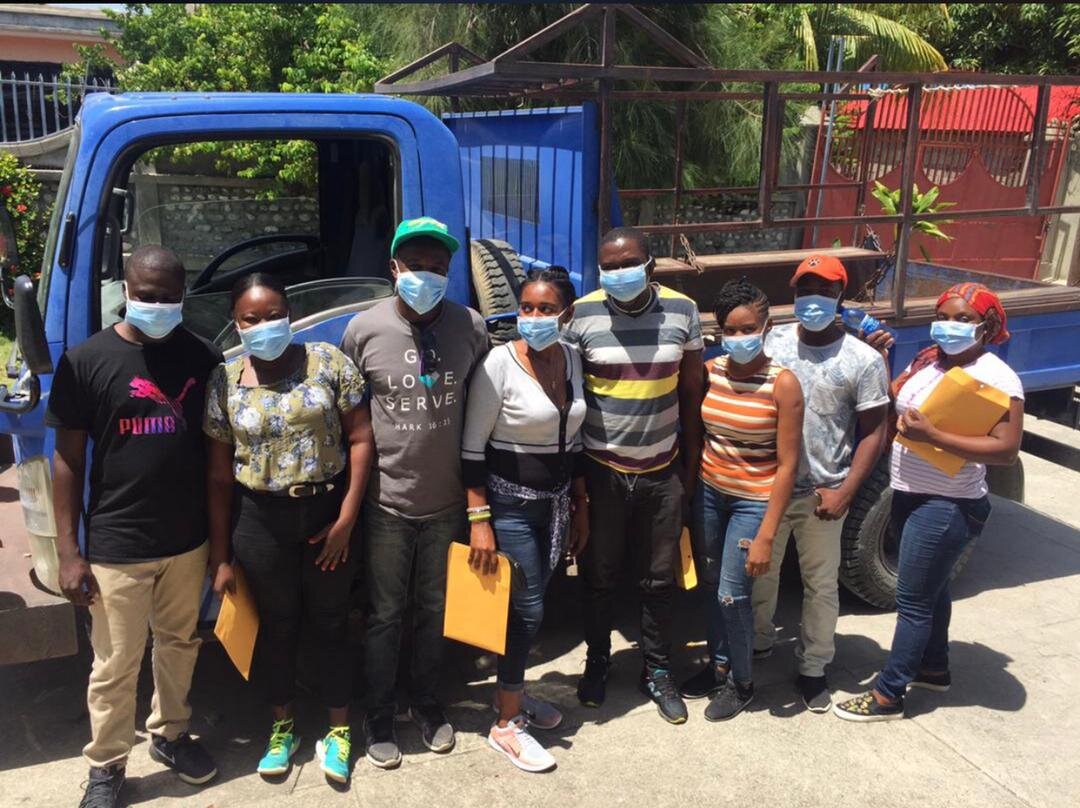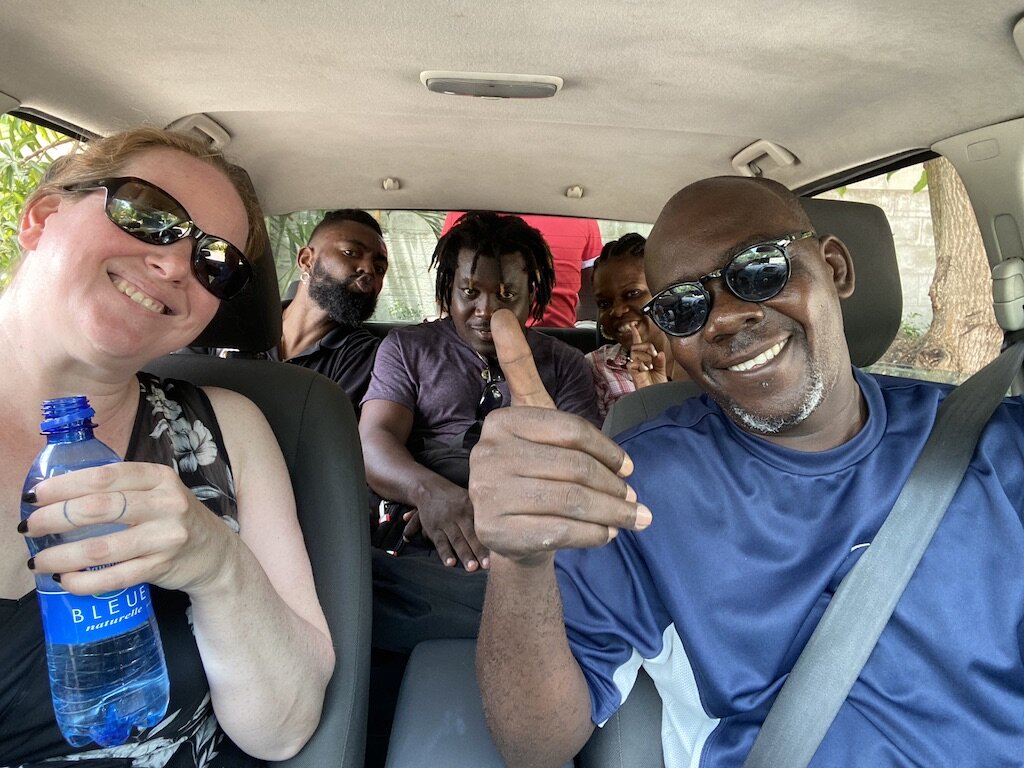Earthquake Response 2021: Month One
The Haiti Response Coalition was created as a platform for sharing information and taking collaborative action. After the earthquake on August 14, Coalition members immediately began to react to the disaster by activating networks of staff, partners and donors. Some Coalition members are based in the three departments directly affected by the earthquake: the South, Nippes and Grande Anse. Others work mainly outside the affected area but were able to begin gathering support from their communities as well.
To facilitate coordination for the most effective possible response, the Coalition met frequently in the first weeks after the earthquake. At the same time, a partnership with the local independent journalists of Konbit Jounalis Lib (KJL) was taking off at just the right moment for KJL to mobilize immediately after the quake to visit some of the harder hit areas in Nippes and the South. In order to cover the entire affected area, we also recruited a director of mobilization in Haiti, Job Joseph, and he began to visit remote communities outside of Jeremie, where he is based.
We quickly determined that one way that we could add value to the emergency response was by carrying out rapid assessments in communities that haven’t received aid to evaluate needs and learn about existing resources. Interviewers ask a series of open-ended questions so that earthquake survivors can explain their own needs and how they would like to receive assistance. Our teams go where others will not, including villages that can only be reached on foot. Using the preliminary information gathered by Job and KJL, follow up teams then return to the communities and go from house to house, documenting damage and interviewing affected individuals, then adding them to our database for direct support and follow up.
At this time, Community Coalition for Haiti (CCH) has a team of eight people in Les Cayes. After receiving an orientation and training, they have been visiting the communities and compiling the lists that will enable us to launch our first round of cash payments starting this week.
As we move into the next phase of the work, we would like to recruit a total of six experienced community organizers for one month, including at least two with experience working in camps for internally-displaced people (IDPs) after the 2010 earthquake, to expand our assessment and direct response and to contribute to the development of a strategy to accompany people currently in camps back to their homes and link them to the support they need there.
In addition to immediate medical care for those wounded during the earthquake, the highest priorities from the seven communities we have identified during this first phase of support are: food, water, basic necessities and shelter. At the same time, school will be reopening and is another critical priority.
Direct Assistance
Haiti Response Coalition is taking steps to respond to each of these priority needs:
Health: We are working with the Haiti Health Network and Barbara Campbell at Dalton Foundation to coordinate with organizations who are able to provide mobile clinics for areas where there is a need for a medical team.
Food and basic necessities: In the first seven communities identified during assessments, locally accessible markets have food and other basic necessities available for sale. In order to support the local economy and small businesswomen, and to avoid the logistical challenges of transporting and distributing these items, Haiti Response Coalition is making direct cash transfers to 600 affected families in the seven communities.
Water: Instead of bringing water into the southwest in plastic bottles, Haiti Response Coalition is looking for long-term water solutions. In several of the target communities, including Pestel and the Cayemites islands, water systems were damaged during the earthquake leading to contaminated water supplies in some cases, and an inability to catch, store and treat water. Family and community cisterns were cracked or destroyed during the quake, and in addition, some farmers in Camp Perrin and Cavaillon are calling for support to repair irrigation canals before the end of the rainy season. Over the coming two weeks, an engineer will visit these communities to provide a technical assessment and recommendations to repair water systems.
Shelter: Unlike the 2010 earthquake which forced people out of their urban neighborhoods into parks and other open spaces, this earthquake has mainly impacted people who have land around their homes and therefore do not necessarily have to move into camps for safety. However, camps have formed throughout the earthquake affected regions and there are several factors contributing to this growing situation. Many people from remote villages have moved down to the camp near the national highways in hopes of benefiting from aid that is being transported along these roads because they have not seen any kind of response where they live in the weeks since the earthquake.
In order to help people get out of the rain as quickly as possible, the Coalition is
Developing model transitional shelters built from materials available locally in each of the three geographical departments;
Gathering information about existing models and best practices to inform our response and contribute to the development of a global shelter strategy;
Exploring options for construction of temporary spaces for schools to reopen in a couple of weeks; and
Working with neighborhood associations in Port-au-Prince to create a model for solidarity konbit work teams to help clear rubble and build temporary shelters for families and schools in affected areas.
In addition, we will be working with partners to develop a model for accompanying families currently in tent camps back to their homes and connecting them with support there.
Coordination, Monitoring and Advocacy
Coordination is both the key to ensuring we don’t repeat the mistakes of previous disaster response and possibly the greatest challenge in the Haitian context.
Konbit Jounalis Lib have been documenting the situation in the communities they have visited through photographs and video interviews. Through their video reports, survivors of the earthquake are able to share their own needs and the help they wish to receive. These videos are posted on the KJL Ayiti YouTube channel, on their Facebook page, on our Haiti Watch blog and Haiti Response Facebook page, on KJL’s Instagram and Twitter, and on Haiti Watch and Haiti Response Twitter as well. We are working to add English captions to all of the videos.
Plans for Month Two
Over the next few weeks, our focus will be on expanding the scope of rapid assessments to include additional communities, including the areas where people currently living in camps in the Grande Anse are originally from. At the same time, Coalition team members will be participating in national and local coordination meetings and working to strengthen coordination by encouraging people to use the Haiti Needs online platform to share detailed information about needs and responses underway. One key focus for our work in the coming weeks will be to find or develop models for temporary shelter that can be constructed with locally-sources materials and to promote a global shelter strategy.
The Coalition is documenting our approach and activities and pulling together an easy to use guide that includes a script for rapid assessments, key elements and training and preparation for working in communities including engaging with local authorities and strategies for identifying and contacting leaders in the community.
At the same time, we will be bringing together members of the Coalition and local community leaders to develop a solidarity konbit work team approach that can be used to bring volunteers from other parts of Haiti to work side by side with affected communities to remove rubble and build temporary and/or permanent shelters. Part of the focus of this work will be on schools that have been damaged or destroyed and require alternative spaces in order to welcome students back for the start of classes in two weeks.
We will also work with families that have left the destruction of their homes to live in camps in order to access desperately needed aid to develop plans to accompany them so they can return to their homes and receive support to rebuild there.



